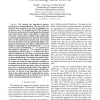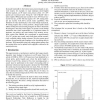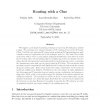50 search results - page 5 / 10 » On the Aggregatability of Router Forwarding Tables |
CCR
2002
13 years 7 months ago
2002
The Internet has experienced explosive growth since its commercialization. The sizes of the routing tables have increased by an order of magnitude over the past six years. This dra...
INFOCOM
2002
IEEE
14 years 12 days ago
2002
IEEE
Abstract—Many recent router architectures decouple the routing engine from the forwarding engine, so that packet forwarding can continue even when the routing process is not acti...
INFOCOM
1998
IEEE
13 years 11 months ago
1998
IEEE
Increased bandwidth in the Internet puts great demands on network routers; for example, to route minimum sized Gigabit Ethernet packets, an IP router must process about packets pe...
SIGCOMM
1999
ACM
13 years 11 months ago
1999
ACM
We suggest a new simple forwarding technique to speed-up IP destination address lookup. The technique is a natural extension of IP, requires 5 bits in the IP header (IPv4, 7 in IP...
ICPADS
2002
IEEE
14 years 12 days ago
2002
IEEE
Nowadays, the commonly used table lookup scheme for IP routing is based on the so-called classless interdomain routing (CIDR). With CIDR, routers must find out the best matching ...



